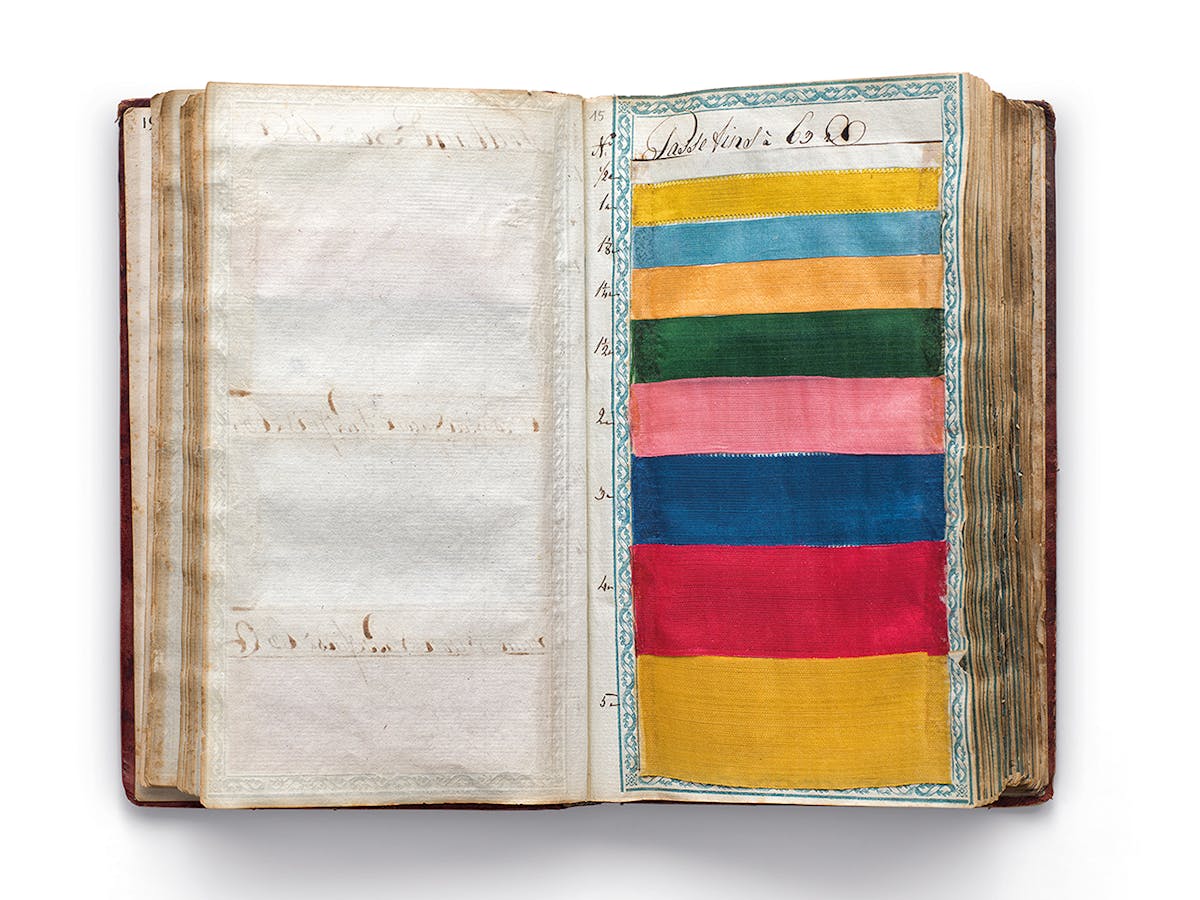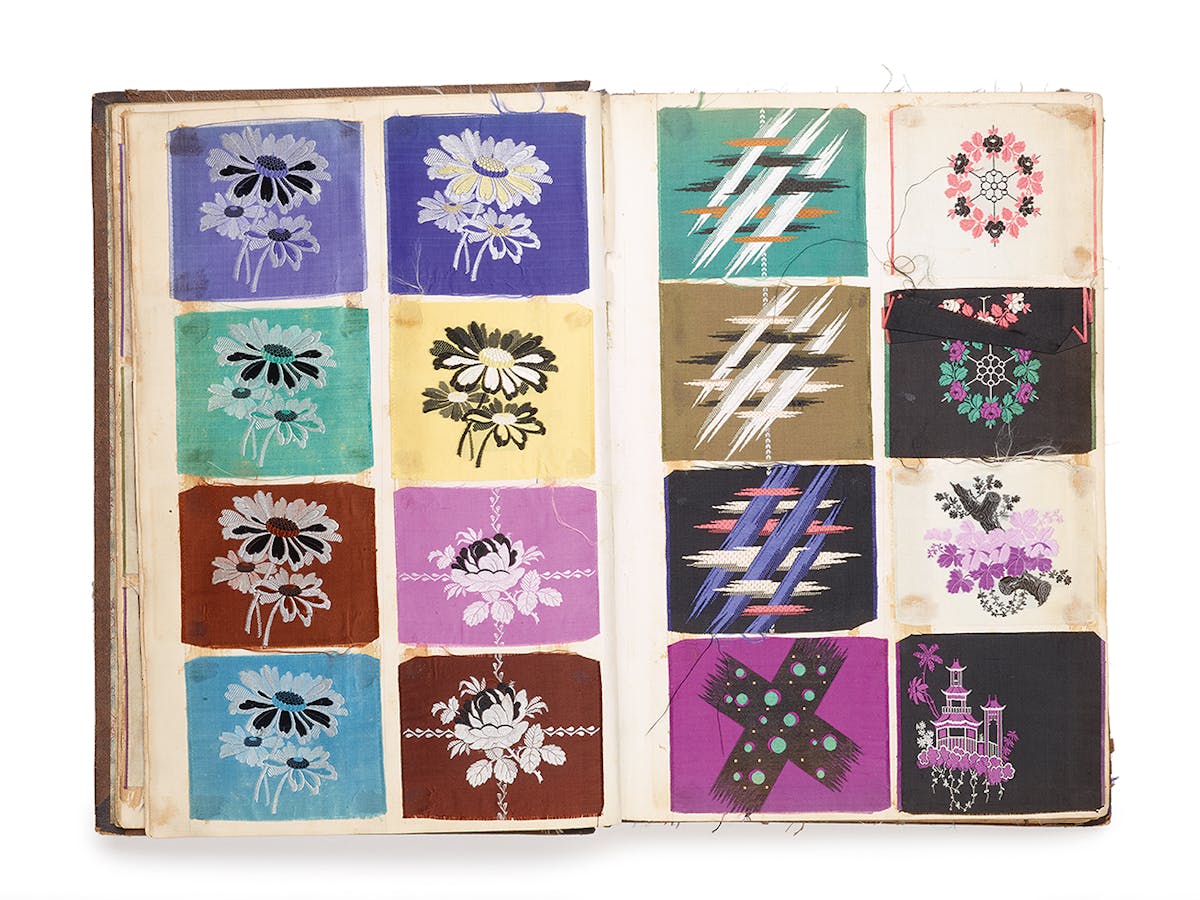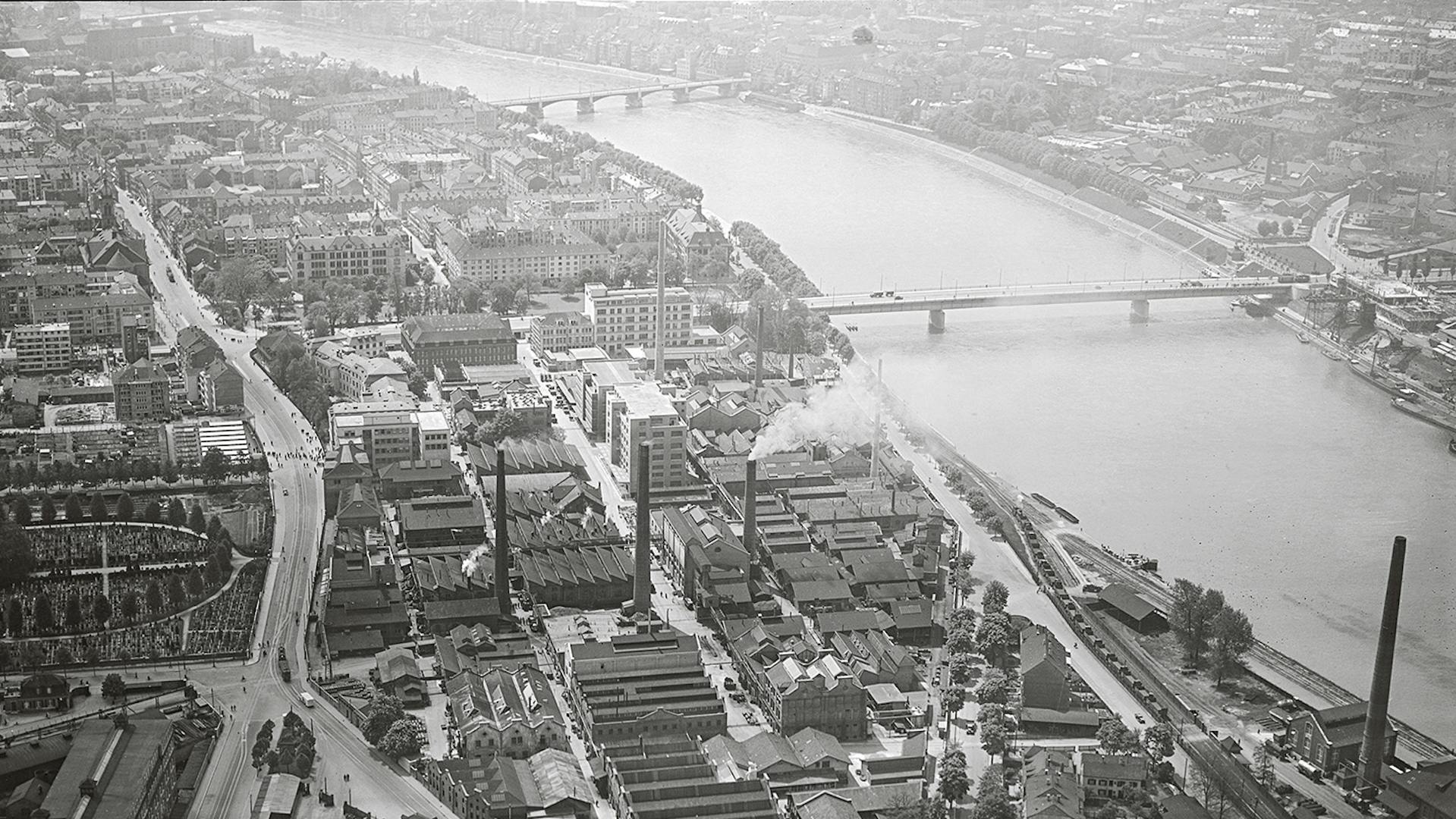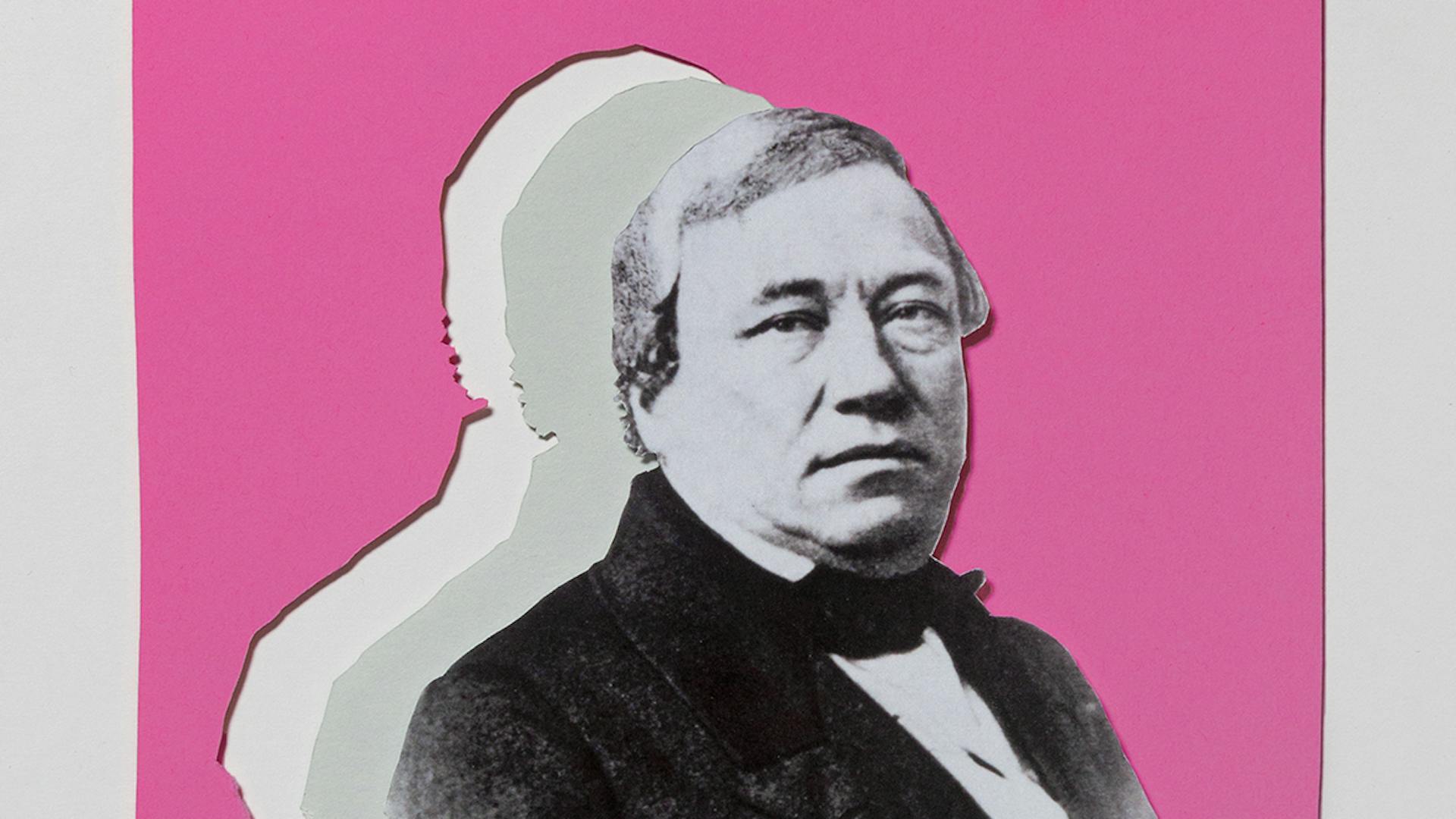
Ribbon factory of Emanuel Hoffmann, between 1770 and 1780, the oldest pattern book.
 Table of contents
Table of contents Out of fashion
Out of fashion Chemistry gains momentum
Chemistry gains momentum Spirit of innovation
Spirit of innovation“Oh, this is a wonderful life – a ribbon weaver’s life. The moment you get out of your diapers, you are already hit by misfortune …”
The Ribbon Weaver’s Song by Ruedi Raecher, from which the above lines are taken, is hardly known today. In fact, only very few people today know what a “ribbon weaver” is, or better, was.
In the 18th and 19th centuries, however, this wasn’t the case. Long before the chemical and pharmaceutical industries came to dominate Basel, when Klybeck was still a green paradise interspersed with lush meadows and vineyards, the ribbon weavers were the symbol of the city’s economic prowess. Back then, Basel was the epicenter of a flourishing silk ribbon industry, where thousands of ribbon or silk weavers, as they were also called, manufactured a wide array of decorative trimmings such as buttons, braids, cords and tassels.
Sarasin and Co.
The rise of silk ribbon manufacturing in Basel began in the late 16th century when religious refugees from Holland, Italy and France flocked to Basel in large numbers in the hope of finding shelter and a new life. Just as French Protestants had helped Geneva thrive as a center of commerce and watch making, it was the persecuted Huguenots who infused Basel with a new cultural and economic vibrancy, which proved to be instrumental in the city’s subsequent economic growth.
Peter Serwauter, a Calvinist refugee from Antwerp, was among the first ribbon weavers to settle in Basel in 1571. However, it was thanks to the French merchants Sarasin, Socin, Battier and Passavant that the city’s weaving industry took off in the late 18th century. Not only did these merchants help transform Basel into a thriving pre-industrial manufacturing center, but they also facilitated the industrialization of the entire region as they introduced the so-called cottage system, in which rural workers manufactured goods in their own homes, which were then bought by urban merchants and resold for a considerable profit.
With the advent of the industrial revolution, hand-operated looms were replaced by steam and electric-powered ones, allowing production on a much larger scale. By that time, Basel had morphed into a major production hub, whose influence extended far beyond the borders of the Swiss Confederation. As noted by Swiss historian Paul Roth, the success story of Basel was already attracting the attention of the European elite in the late 18th century. For instance, during his visit to Basel in the summer of 1777, Austrian Emperor Joseph II inquired about the city’s exceedingly lucrative weaving industry and expressed his desire to take a closer look. At the so-called White House, where the company of Hans Franz Sarasin was producing silk ribbons at the time, the Emperor came to experience the intricacies of silk-weaving firsthand.
Around 1770, Basel had 16,000 inhabitants and around 20 ribbon factories. Over 1200 looms were in operation by that time. The economy was booming, and by the turn of the century the number of ribbon looms had doubled. It reached its peak around the middle of the 18th century when the industry generated an annual turnover of more than 80 million Swiss francs. Silk ribbon weaving remained the predominant employer in Basel until the beginning of the First World War, employing more than 8000 people in the city alone and another 12,000 in the surrounding countryside in 1905.











